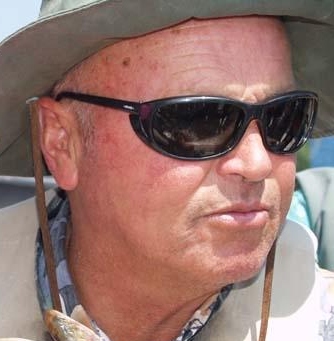Looking Back 50 Yrs. at Hurricane Agnes – Message From the Cap’n

Message from the Cap’n is a compilation of fishing advice, waterman and weather insights, Chesapeake lore, and ordinary malarkey from the folks who keep their feet wet in the Potomac and St. Mary’s rivers.
From the Interpretive Buoy System the water temperature in the Lower Potomac is 74 degrees Fahrenheit and the salinity hovering around 13 PPT ( parts per Thousand) heading into the last week of June.
An article in the Bay Journal prompted this missive today, simply because we don’t understand just how much weather plays a role in our production within the fisheries. (And here I am speaking about only one p0rtion of our watershed: the Potomac River upon which I live.)
Tropical Storm Agnes only reached hurricane force briefly. So, Tropical Storm Agnes slipped up the western side of Maryland with only 45 mph winds in June 1972. And she dumped as much as 18 inches of rain along her path. Salinity does matter to all living creatures. Ocean water is about 35 ppt (parts per thousand), mid-bay at Point Lookout is generally 13 ppt, and the Upper Potomac just below Woodrow Wilson Bridge is around 5 ppt. Oysters cannot tolerate water that is fresher than 5 ppt any extended period of time.
About 10 days after Agnes caused a deluge of fresh water down the Potomac in early July 1972, I stood on the St. George Island Bridge and saw what looked like a sea of calf tongues floating down the Potomac River. Oysters had died, came out of their shells and risen to the top of the water. This one event forever changed the Potomac ecosystem.
Another illustration of lasting change occurred at the head of the Wicomico River in St. Mary’s County. In the 1960s, oyster grew so fast on the oyster bars at the mouth — Mills, Keys, Starter’s, and Kohuk’s — that Campbell’s Soup Company started buying them to steam and shake out of their shell for an oyster stew product. These oysters were 6 inches to 7 inches long and 1.5 inches wide. They were impossible to shuck by hand.
Most of them were bought by Captain Sam Bailey at Bushwood Wharf and transported to the cannery by truck or boat. Year after year, oystermen worked these oyster rocks and made a very good living.
Agnes ended that killing oysters in the upper part of the Wicomico with massive amounts of fresh water. The Wicomico has not come back to good production since.
So it was throughout the Chesapeake. Agnes forever changed the ecosystem of the entire Chesapeake Bay. We have never caught up in these 50 years since her visit. In The Bay Journal, Tom Horton, “Bay Sage,” states: Tropical Storm Agnes: 50 years later, is still the biggest story I ever covered.
Till next time, remember “It’s Our Bay, Let’s Pass It On.”
To learn about tours and trips into the Chesapeake, keep in touch with Fins + Claws on Facebook. Catch up on Messages from the Cap’n Member Page. Please visit Cap’n Jack’s lore and share with your social media sites. Or reach him at [email protected] or 240-434-1385.
























Do you remember Hurricane Hazel in 1954?
Interesting info jack. Thanks
Fascinating info, Jack. You should write a book.